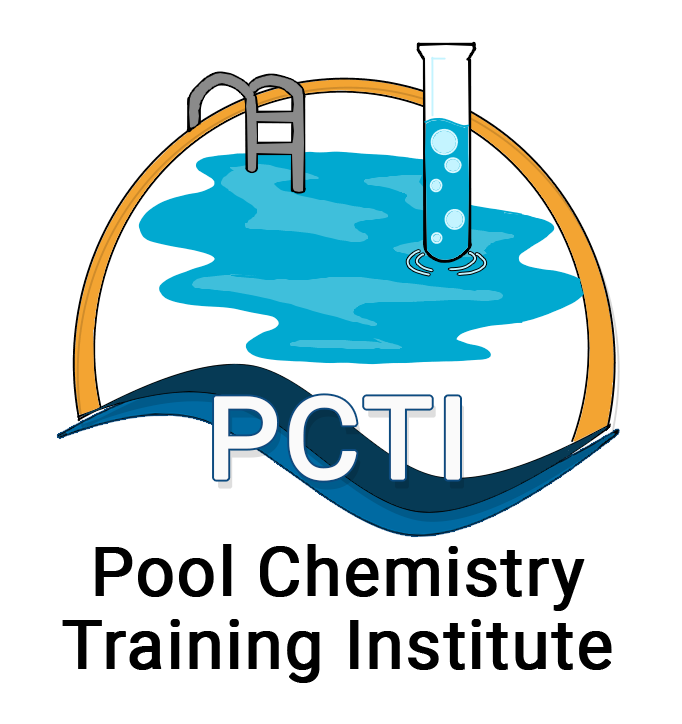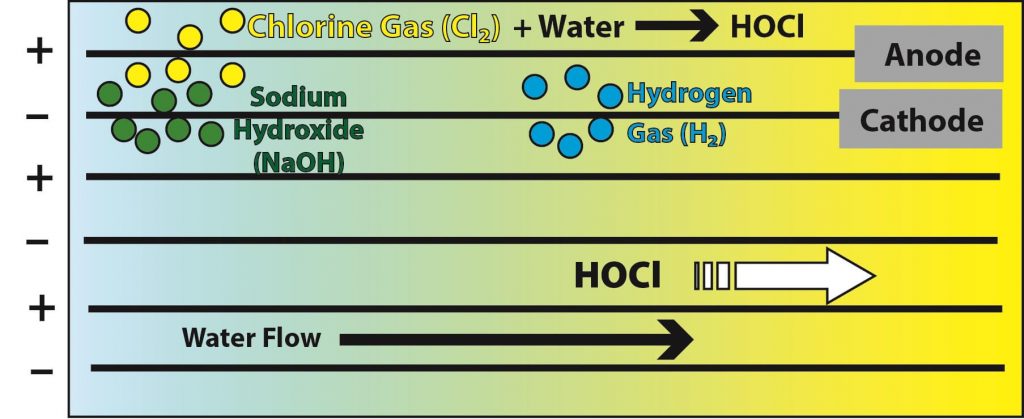I recommend a maximum cyanuric acid (CYA) of 50 ppm in swimming pools except when using a saltwater chlorine generator (SWG). When an SWG is used, I recommend a level of 70-80 ppm CYA.
I also recommend a minimum free chlorine (FC) level of 5% of CYA when using an SWG or when borate at 50 ppm are used. It seems logical that using a higher FC level due to a higher CYA level would require a larger amount of chlorine. Using 5% of CYA with 50 ppm of CYA would require 2.5 ppm FC and using 5% of CYA with 80 ppm CYA would require 4.0 ppm FC. But the amount of chlorine needed to be added daily to maintain a higher FC level is actually lower than the amount of chlorine that is needed at a lower CYA and FC level. The reason is that CYA protects FC in water from being degraded by UV (sunlight) which reduces the amount of chlorine enough to more than make up for the higher FC level required.
Because a lesser amount of chlorine is required at higher CYA levels, the SWG does not need to run as long each day. The cells in an SWG have a life expectancy based primarily on how long it is on, a lower daily run time means a longer cell life.
In 2007, a TFP Expert (Trouble Free Pools – www.troublefreepool.com), did some in-field testing. He wrote, “The bottom line of the testing was that the SWG cell produced the same amount of chlorine no matter what the CYA level was and it was very close to what the manufacturer specified as the production level.”
“However, the extinction of chlorine reduced significantly with higher CYA levels. So even though you have to run at higher chlorine levels with higher CYA, you actually lose less chlorine per day at higher CYA levels.”
Here is a summary of the testing:
| CYA | Target Free Chlorine | Chlorine Extinction/Day | SWG Setting/Hours |
| 45 ppm | 2.25 ppm | 1.0 ppm | 60% for 6 hours |
| 80 ppm | 4.0 ppm | 0.5 ppm | 35% for 6 hours |
“So even though I needed almost twice the FC level at CYA of 80 ppm, I could get by with almost half the chlorine production.”
The lower SWG output percentage means that the cells will last longer. Having a higher FC level means that shocking or using the Boost feature on the SWG is not needed. This also translates into longer cell life. If shocking is needed, it is better to use liquid chlorine. This provides an instantaneous high level of FC instead of using the Boost which is a gradual increase in FC over 24 hours and further reduces cell life.
Salt Water Chlorine Generators are Small Chlorine Factories
SWGs produce chlorine gas (Cl2) at the positive (+) electrode, sodium hydroxide (NaOH) and hydrogen gas (H2) at the negative (–) electrode. The chlorine and sodium hydroxide dissolve readily into the water. The hydrogen gas bubbles and the water passing through the cells cause aeration and turbulence which causes CO2 to outgas or leave the water. The outgassing of CO2 causes the pH to rise. All SWG pools have the common problem of pH rise.
The pH rise can lead to shortened cell life because the pH rise causes scale formation. The build up of scale on the cells shortens the cell life. The water is also hotter near the cells due to the energy being used. Locally, there is a high pH, high temperature and raising these two conditions increases scale formation potential within the cells. Having a CYA level of 70-80 ppm slows scaling in pools with SWG.
A FC level of 3.0 to 4.0 ppm and a level of CYA of 70-80 ppm will provide the best disinfection and least scaling. Shocking will not be necessary under normal conditions.
Having a total alkalinity (TA) of 80 to 90 ppm will increase pH stability. This lowers CO2 outgassing. Having a high TA will cause more outgassing of CO2 and make the pH continuously rise or drift upward toward 8.2. With SWG the pH is always increasing but the TA is not changing. Once pH is high, acid is added which lowers both pH and TA. However, this makes the TA too low. Now bicarb will need to be added to replace the lost TA. Most of the time, the TA is increased too much which causes the pH to rise and the potential for more scale.
One idea to keep the pH from increasing so much between visits is to run the pH lower than recommended and let it drift up. This is not a good idea either. The reason is that the lower the pH, the more the CO2 outgassing. Lower pH equals faster outgassing. So, it is best to keep the pH at 7.5 to 7.7 and when it gets to 7.8 it is time to add acid. This will take a small amount of acid (about 17 fl oz in 15,000 gallons).
Borate Slows Down pH Rise (pH Buffer) and Prevents Algae
I highly recommend using borate in pool water at a level of 50 ppm. In pools with an SWG I recommend a slightly higher level of 60-70 ppm borate. This has a dual purpose. Borate is a pH buffer that is better at keeping the pH from going up than from going down. The other buffers in the water are TA and CYA and they are better at keeping the pH from going down. Therefore, we have a buffer system that prevents the pH from going up or down. This keeps the pH stable or locks it in.
In addition, borate is an algaestat which means that it prevents algae but does not kill it. The benefit is that rather than relying on chlorine to kill algae that is brought in by wind or carried in on feet which occur continuously, borate stops the algae from blooming.
By preventing pH rise and preventing algae, SWG cell life is extended. The SWG can run at a lower output setting and chlorine demand is less so the SWG doesn’t need to make as much chlorine. Running the SWG less means the pH will not be rising as much because less outgassing, aeration and turbulence are created.
I recommend using boric acid instead of Borax or sodium tetraborate pentahydrate to attain the borate level. The reason is that all borates other than boric acid raise the pH to about 9.0 and raise TA by about 120 ppm. This requires 4.5-6 gallons of acid per 15,000 gallons to bring the TA and pH back down. Boric acid only lowers pH by 0.2 with no change to TA.
Best Water Conditions for Pools with SWG
pH 7.5 to 7.7 add acid when >7.8
TA 80 – 90 ppm can lower to 70 ppm to stabilize pH
CYA 70 – 80 ppm add CYA when 60 ppm or less
Borate 60 – 70 ppm add borate when <30 ppm; use boric acid
TDS Max 1,500 + Starting TDS + recommended Salt level (usually 3,000 to 3,400 ppm)
Calcium 350 ppm Plaster or cementitious surfaces ± 50 ppm, lower when 500 ppm
250 ppm Vinyl, fiberglass, acrylic, etc. ± 50 ppm, lower when 400 ppm
Free Chlorine 3.0 to 4.0 ppm Usually 5% of CYA
LSI (Sat Index) – 0.3 to + 0.3 use an LSI calculation that includes adjustments for CYA and Borate
Be aware of water temperature winter to summer can be ± 30° F Include salt in TDS when calculating LSI
Note: There is some question about borate toxicity. Without including two more pages of information, the summary is that in order to obtain a dose that might cause a problem, a human would need to ingest more than 5 gallons of pool water at once and then it is not certain that it would be a problem. Dogs are more sensitive, and they are 4 times more sensitive so a dog would need to ingest a gallon or more at once and then it is not certain that there would be a problem.
Assessment of boron under NSF/ANSI 50 determined that the currently recommended application rates of boron (resulting in concentrations of 35-50 ppm) did not pose a substantial risk to human health and this exposure has an LOC (level of concern) of 150 so you could use 1.5 times the level with a margin of safety of 100 times. EPA recommendation is max 50 ppm.
Borax has been for sale for about 150 years to use in your laundry. Boric acid is used in eye drops and foot powders. EPA also has a maximum level of exposure for CYA of 100 ppm in pool water but there are thousands of pools with 200, 300 or even 400 ppm CYA. So a little extra borate probably is okay considering the margin of safety is 100 times.






Leave a Reply
Your email is safe with us.
You must be logged in to post a comment.